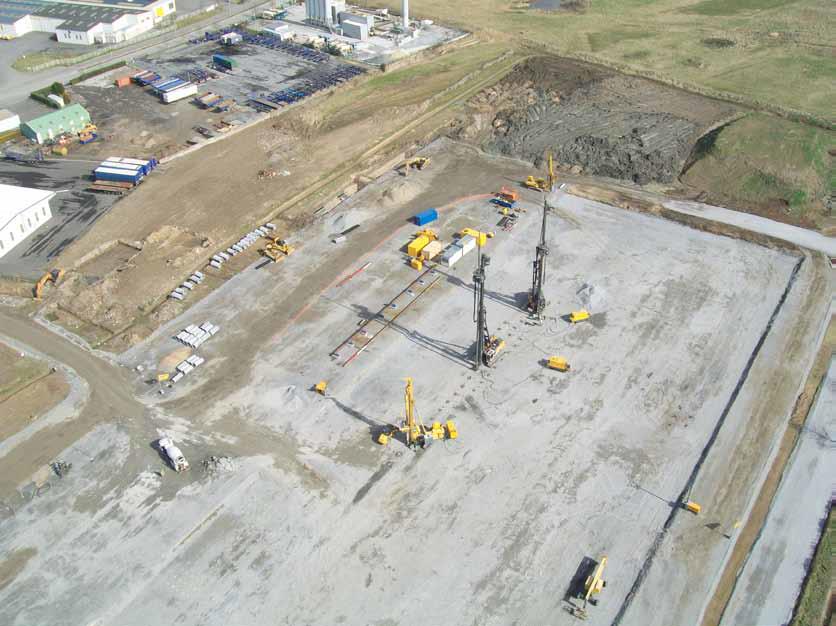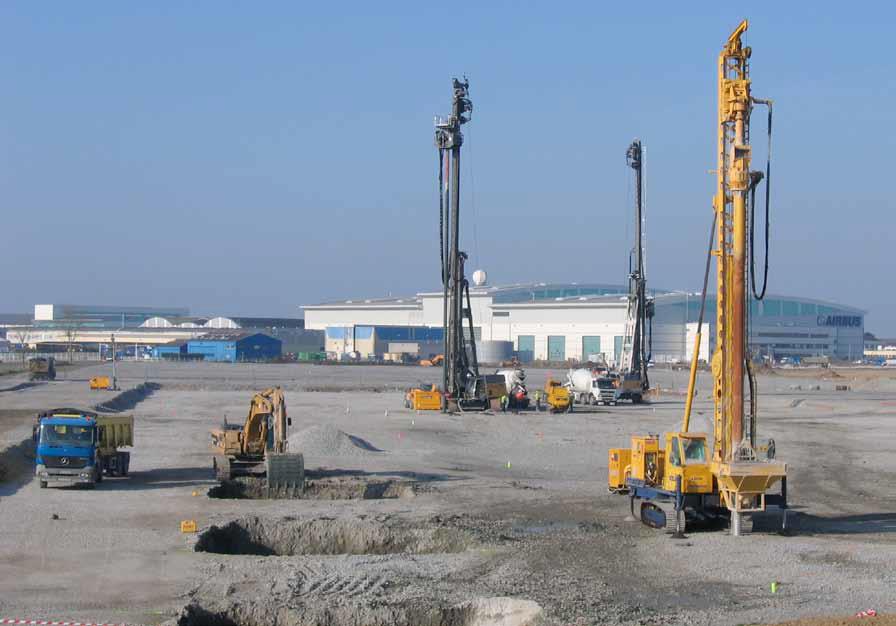

Saint-Nazaire, Airbus second production site in France, assembles, equips and tests several aircraft, induding the A350 XWB, scheduled to go into service in 2014. The new 12,000 square metre factory built to assemble this plane has two gantry cranes, each 60 metres long, to lift andmove extremelyheavy components, The building's structure therefore has to support weights of several hundred tons.
Building on saturated ground
The subsoil consists of soft days, 25 to 45 metres thick on bedrock and the ground water level lies only a few centimetres below the surface.
Since Airbus wanted the factory to be built in only six months, another technique had to be used than drainage reinforcing the ground with rigid indusions, coupled with a gravel layer compacted by hydraulic induction. The factory could then be built immediately on these inclusions without soft soil settlement.

Airbus site at Saint-Nazaire
© Photothèque Keller

Airbus site at Saint-Nazaire
© Phototheque Keller
The ground was reinforced with 2,200 rigid indusions, concrete columns 40 centimetres in diameter and 25 to 45 metres long depen- ding on their location. Rigid inclusions are created by pouring concrete into drill holes descending to the bedrock. Alayer of compacted gravel is then laid over the grid of inclusions, which transfers most of the building's weight via the inclusions to the bedrock.
Compaction by vibration
The layer of day, unable to bear the foundations of a factory, was replaced to a depth of 2 to 4 metres by the bed of gravel resting on the rigid inclusions. As it was impossible for earth-moving machine to work below the ground water level, the gravel layer was compacted 2,500 times with a vibrator. This rearranges the gravel partides so that they fit doser together. This densified and improved layer could then support the new factory.